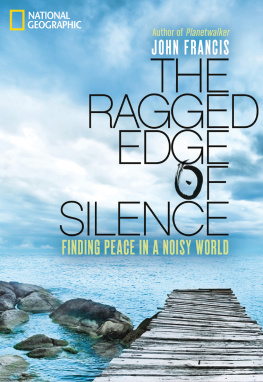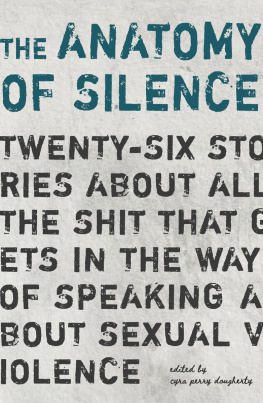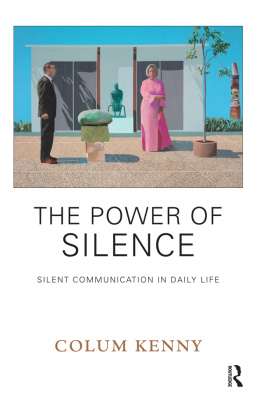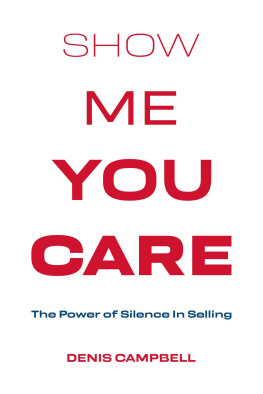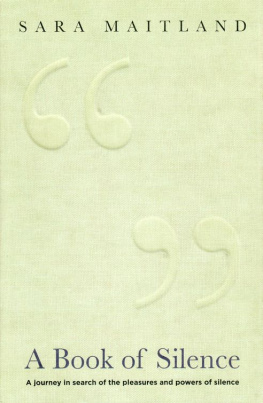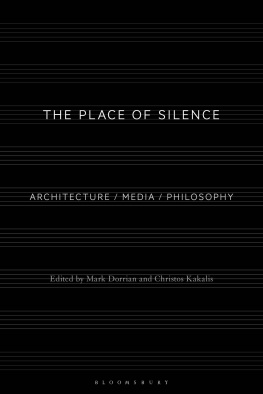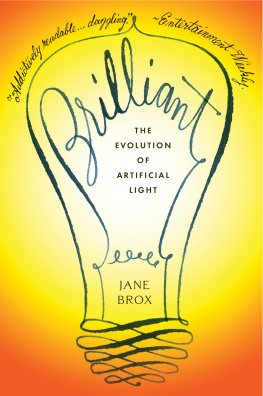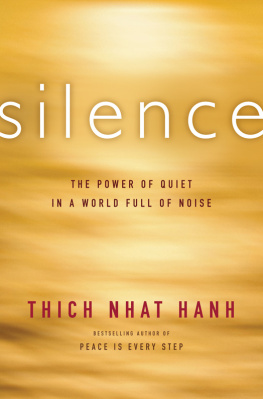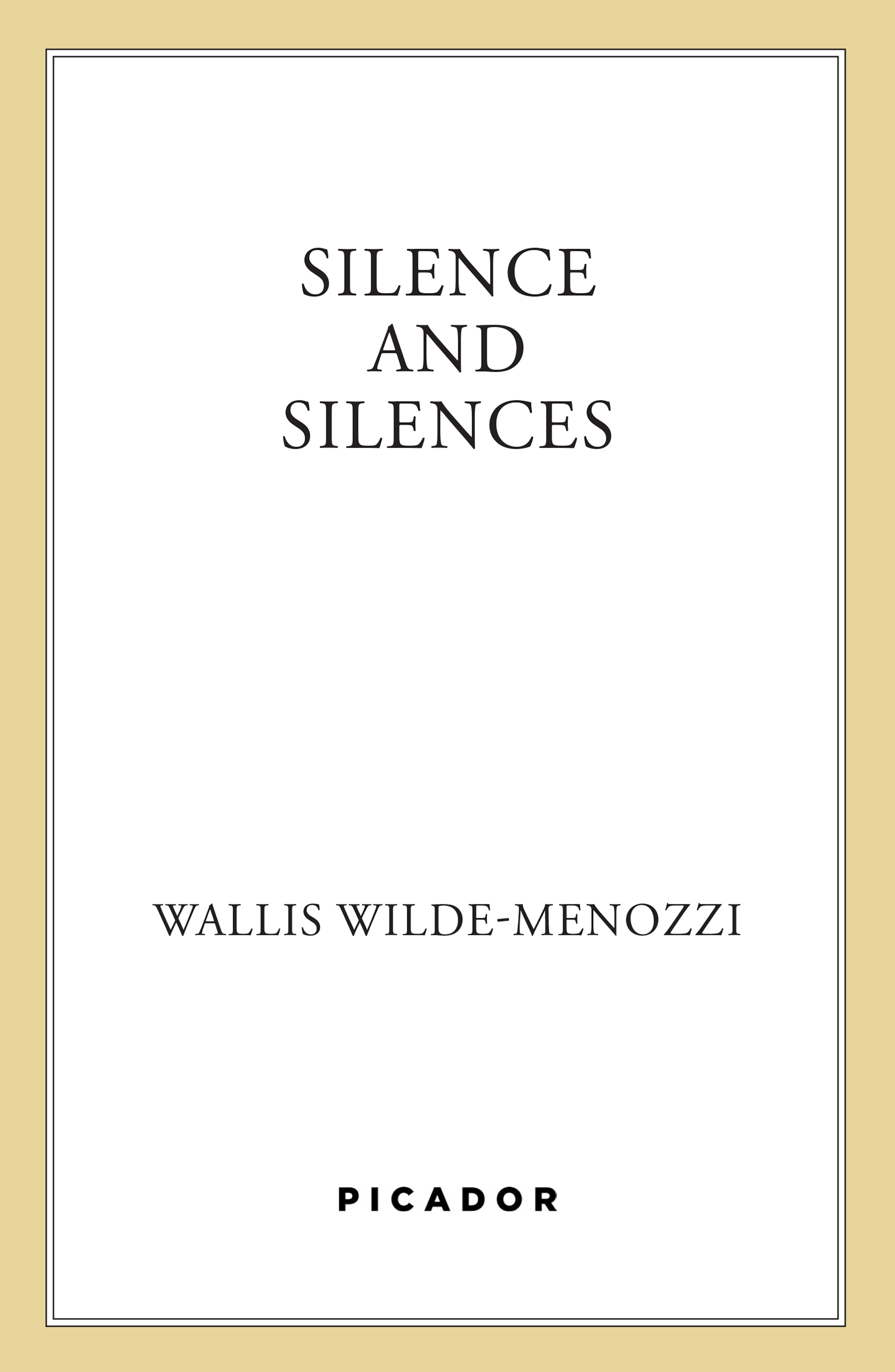Contents
Guide
Pagebreaks of the print version

The author and publisher have provided this e-book to you for your personal use only. You may not make this e-book publicly available in any way. Copyright infringement is against the law. If you believe the copy of this e-book you are reading infringes on the authors copyright, please notify the publisher at: us.macmillanusa.com/piracy.
For Lucia, whose blazing spirit showed us a new world in silence
I think we are blind, Blind but seeing, Blind people who can see, but do not see.
JOS SARAMAGO, Blindness
As if the Sea should part
And show a further sea
And thata furtherand the Three
But a presumption be
Of periods of Seas
Unvisited of Shores
Themselves the Verge of Seas to be
Eternityis Those
EMILY DICKINSON
There, near the reeds, it is possible to hear a flap displacing air, to feel the lift from personal self to bird to sky, from inside to outside, drawn to an instant of accelerating wings, where duality and words are pushed out.
WWM
The Bronx River in Yonkers is a silt-brown color that rarely reflects the sky. The changes in its industrial tone appear when the surface is glassy, or when currents capture the surroundings, or when it is striped by lights falling from the hospital windows toward evening and dragged into waving orange ribbons. Today it is still, with pewter collars of ice along the edges. The man-made waterfall near the bike bridge is foaming with pollutants, gluey white, that attenuate as they bubble and break up downstream. It is dusk, but the sun is not visible. The few runners are mimetically absorbed in the gray ending to this January day. No birds are on the water.
I find myself here, not to do the lake, even by walking slowly. I want to look up. With runners checking their watches and wearing black gauges on their ankles, I see robots, in woolen hats. The fixed eyes of the joggers get on my nerves. We have become anxious people measuring ourselves.
I am here because I wanted to get out of our steam-heated apartment, to feel the wind, and, I admit, to look out of the corner of my eye for the white heron I saw late last summer on the day before I returned to Italy, where our house and work patiently wait.
Since Paolo, my Italian husband, and I returned to Bronxville for the holidays, the bird has been nowhere to be seen. Tonight, again, the elusive solitary is missing. Its almost my last chance, since in another week we turn back to our life in Italy.
Nothing in particular seems in touch with me, unless it is my wistful mood. The cars from the Bronx River Parkway are at my back, their lights on high beam. The sludge of commuter traffic has started. The petulant geese are gone for the night. Some evenings last summer as they spread out on the grass in the park and dozed, they reminded me of cows Id come across in Italian villages. Theyd faded into the dark, but their smell, their rustle, made them suddenly emerge as a phantom herd, all heads pointedly turning.
There is definite silence in this falling darkness. It is an atmosphere rather than an objective lack of sound. It is a withdrawal, while at the same time the cover is getting closer, far closer than the day ever seems. The closing-with-us-inside nudges natures great loom. Silence rides not on the withdrawal of light but on its infiltration of the dark. Night is the tide, with darkness coming farther and farther in. When I manage to experience its approach, not from the tight frame of an apartment window or car, its shawl casts itself over my body. It holds me in peace, in spite of shifting movements in the dark.
Along the east bank of the river is a relic of a stone mill. Now it is little more than a ghostly suggestion of window frames in a wall. The plash of the river and then the whine of the water-driven engines were two different pitches defining this place. The sound of the metal blades hitting stone must have been deafening. The barely legible historical marker is a camouflaged whisper, while the signs for the police call boxes are large enough to convey menace. If they were of equal size, would we see past and present differently?
A melancholy question sits in my head, perhaps because I have not seen the heron and the crack in consciousness that I like to believe its appearance brings, perhaps because I am returning to Italy, perhaps because recent U.S. politics have been a reversal and deterioration of many patterns I like to count on as true. My question seems to bewhere are we going?
Why I dont ask the question directly about myself is strange. It would be appropriate. But I seem to need to make some distinction and at the same time to claim a collectivity. I am part of this land, these woods, this destruction, and this system of government. We have gotten used to ignoble numbers; our scales for value, our measures for time are weirdly banal. We add numbers up and most often they lead us to money. Many calculations are too small, too self-interested, too shortsighted. Numbers are grocery bills, stock earnings, the surreal dollars and cents of guns. Bargains and good deals. Test scores. Costs from one side only. Numbers are likes and immigrants massing at borders. Just standing here, my idea of a few minutes of silence has been taken over.
I always had an inner life: after I moved to Parma forty years ago, the intensity of the unspoken changed dimensions, as if a new, broader, steeper slope leading underground was now part of my everyday identity and awareness. The eleventh-century duomo in Parma, constructed of stone, held the center of the life I crossed every day, majestic and unchanging. My U.S. roots: the red roofs of Stanford University in California, the pea-green soup of Lake Wissota in Wisconsin, the turquoise night sky of Grand Central Terminal in New York City churned, unanchored. In the early Parma years, I was a married tree, a rooted transplant, with disturbed underground systems spreading out to make connections wherever I could. Feeling invisible, I drew surprising conclusions from the effort to define roots of any significance. Women and time, science and religion stirred questions and comparisons arising from my new situation and the old assumptions.
I hear that silence and noise over and over in others. The resistance to telling stories that come from another place is palpable in the Nigerian women with eyes that dart and slide away like stones skipping across water, when they wind their way to a dusty room where I am holding a class for them as refugees in Parma, where they are safe to talk and write about what their names mean to them. The silence chokes them, it wells up and almost presses tears from their eyes while their lips stay closed. The intensity of the unspoken is down deep. They insist that they have no memories; they know nothing except that living on the streets in Nigeria was very hard.
My awareness of silence changed with my experience of changing languages and country, but this book will not linger on that development. Awareness of silence has grown far beyond words or myself. It is all around me and us. The spiritual dimension of silence can be like a shocking plunge into a glacial lake. If it continues, its enveloping presence makes us grow silent in fear and trembling. Sometimes I am a presence in it within myself. Putting that dimension of silence into words is a contradiction: it is the silence beyond all silences, the dark and light of transcendence. It is a search that began in the earliest rituals of human beings and continues: Stonehenge; Job; Saint Augustine; Joan of Arc; Ibn Arabi; Etty Hillesum; the mysteries of universes; the mysteries of love.



